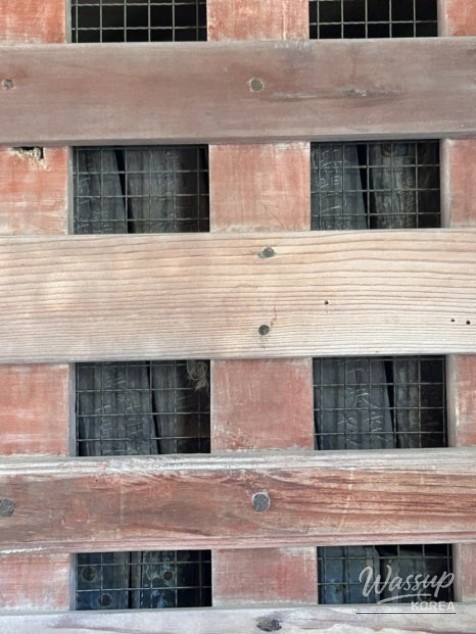A Special History Trip to Haeinsa Temple in Hapcheon with My 12-Year-Old Daughter

Hello, I'm a licensed real estate agent.
I'm back with a story about a special history trip I took with my 12-year-old daughter to Haeinsa Temple, located in Hapcheon-gun, Gyeongsangnam-do, last fall.
Since fall is approaching, I thought it would be a good idea to share our experience so you can consider visiting too!
The Special Reason for Choosing Haeinsa Temple
My daughter has always been interested in history, especially the Joseon Dynasty, but her knowledge of the Three Kingdoms and Goryeo Dynasty was relatively lacking.
Haeinsa Temple was founded in the 3rd year of King Aejang of Silla (802 AD) and I thought it would be the perfect place to vividly experience the history of Korea's Three Kingdoms and Goryeo Dynasty. Actually, I have a special connection with Haeinsa Temple. I first visited it for a prenatal trip when I was pregnant with my daughter, and again when she was seven years old.
So this was my third visit, and Haeinsa Temple still retained its magnificent and solemn atmosphere.
The Status of Haeinsa Temple, the Head Temple of the 12th Parish of the Jogye Order of Korean Buddhism
Hapcheon Haeinsa Temple is not just a simple tourist attraction.
As the head temple of the 12th parish of the Jogye Order of Korean Buddhism, it is one of the three Jewel Temples of Korea, along with Tongdosa and Songgwangsa. It is especially famous for the Tripitaka Koreana, a UNESCO World Heritage Site, and its value is recognized.
Located in the Gaya Mountain range, Haeinsa Temple is situated at an altitude of 700m and is about a 2.5-hour drive from Busan. It is perfect for a family trip because you can enjoy the beautiful natural scenery of Gaya Mountain, lush with new greenery in the spring, along with the tranquil atmosphere of an ancient temple.
History Exploration Course with My Daughter
1. From Iljumun Gate to Haetalmun Gate
The path from the Iljumun Gate at the entrance of Haeinsa Temple, through Bonghwangmun Gate and Haetalmun Gate, to the Daeungjeon Hall was a historical education site in itself.
I explained the meaning of each gate and the structure of Buddhist temples to my daughter as we walked, and because she's 12, she asked much more in-depth questions than before, so I felt like I was studying too.

2. Janggyeong Panjeon and the Tripitaka Koreana
The highlight of Haeinsa Temple is definitely the Janggyeong Panjeon. This is where the Tripitaka Koreana, created with the earnest desire to overcome the Mongol invasion during the Goryeo Dynasty (1236-1251), is stored.
I explained to my daughter the history of the Mongol invasion of the Goryeo Dynasty and the will of the people at the time to overcome the national crisis by relying on Buddhism, and it seemed that history was approaching her not as simple memorization, but as a living story.
In particular, my daughter showed great interest in the explanation of the scientific preservation facilities of the Janggyeong Panjeon. She was impressed by the fact that the architectural techniques of our ancestors for natural ventilation and humidity control are not perfectly explained even by modern science.

The Special Charm of Haeinsa Temple in Autumn
We visited Haeinsa Temple at the end of October, which was the most beautiful time with colorful autumn foliage.
The harmony of the autumn foliage forest of Gaya Mountain and the tranquility of the ancient temple gave the feeling of being in a Seodang where old scholars were devoted to their studies.
I took a short break with my daughter in front of the Myeongbujeon Hall, and in the silence where only birdsong and wind were heard, I was able to escape from the noise of everyday life and take a real rest.
The Effect of Historical Education with Children
Through this trip, my daughter's understanding of the Three Kingdoms and Goryeo Dynasty has improved noticeably.
In particular, the experience of seeing and feeling the Buddhist culture of Silla and the Great Mongol Resistance of the Goryeo Dynasty directly on site showed a learning effect that was different from learning only from books.
(Actually, I found that she really liked it when I took her hiking to Gyeongju Namsan under the pretext of studying history~)

More than anything, I realized the importance of experiential learning once again. I can't express the pride I felt when my 12-year-old daughter said, "Mom, I'm finding the Goryeo Dynasty history much more interesting now."
Like they say, you have to taste something to know it... I think she's finally realized that the more you know, the more fun it is...ㅋㅋㅋ
Haeinsa Temple Visiting Tips
It takes about 15 minutes to walk from the parking lot to Haeinsa Temple. If you are with a child, I recommend taking your time to look around.
The admission fee is 3,000 won for adults and 1,500 won for children, and you can have a more fruitful visit by receiving guidance from a cultural commentator.
The Daejanggyeong Record Culture Festival (2025.10.24~10.26) is also held in the fall, so it will be an even better memory for families.
In Conclusion
It's a bit of a distance from Busan to Hapcheon, but it's the best historical education site where you can have a valuable experience.
In particular, it provides a valuable opportunity for our children to develop an interest in and pride in Korean history.
Next time, I'm going to try the Haeinsa Temple Stay.
I want to spend about a day at the temple with my now 13-year-old daughter and experience Buddhist culture in more depth.
(She's a picky eater who doesn't eat vegetables, so if she gets scolded by the monks, will she eat them?ㅋㅋㅋ)
If you are planning a meaningful domestic trip with your family, I highly recommend Haeinsa Temple in Hapcheon!






No comments yet.






